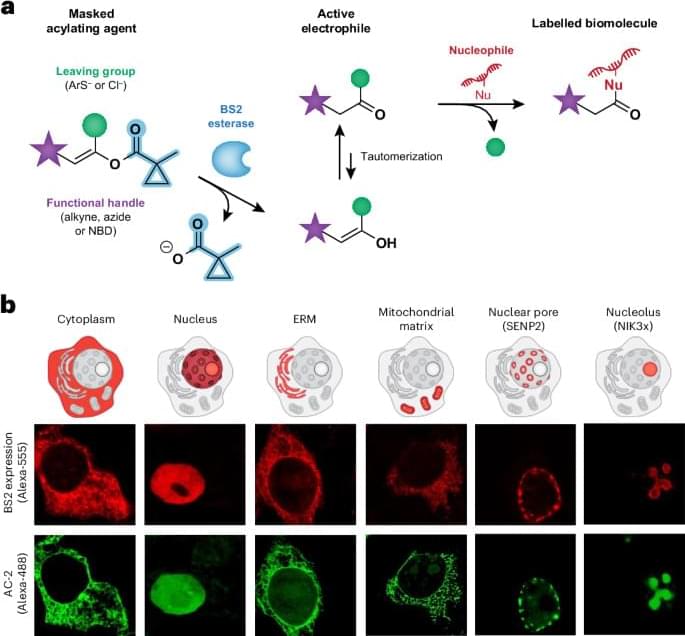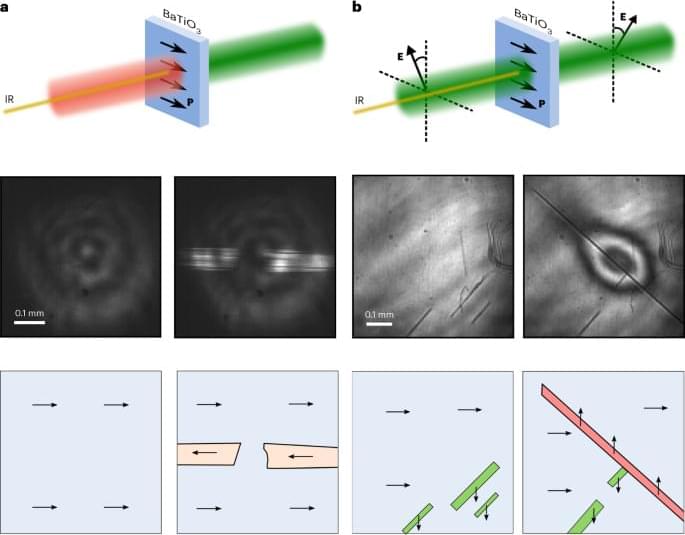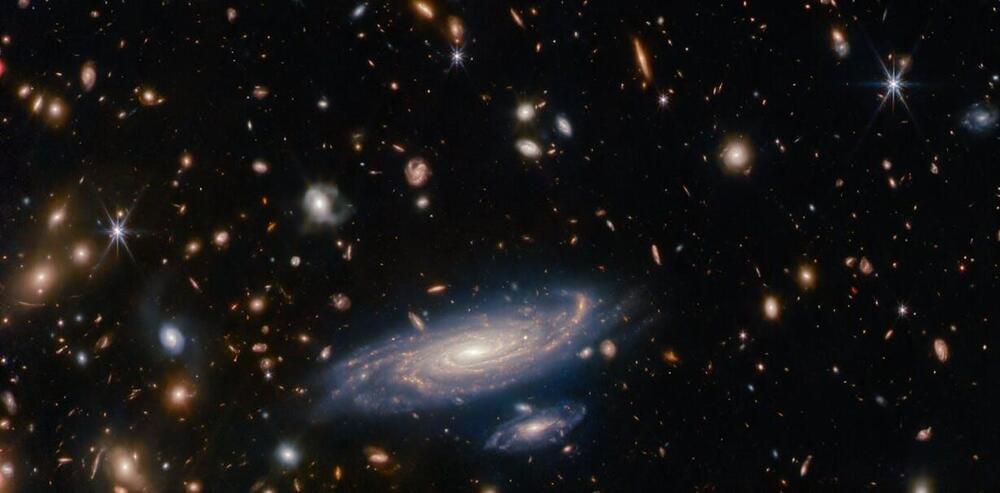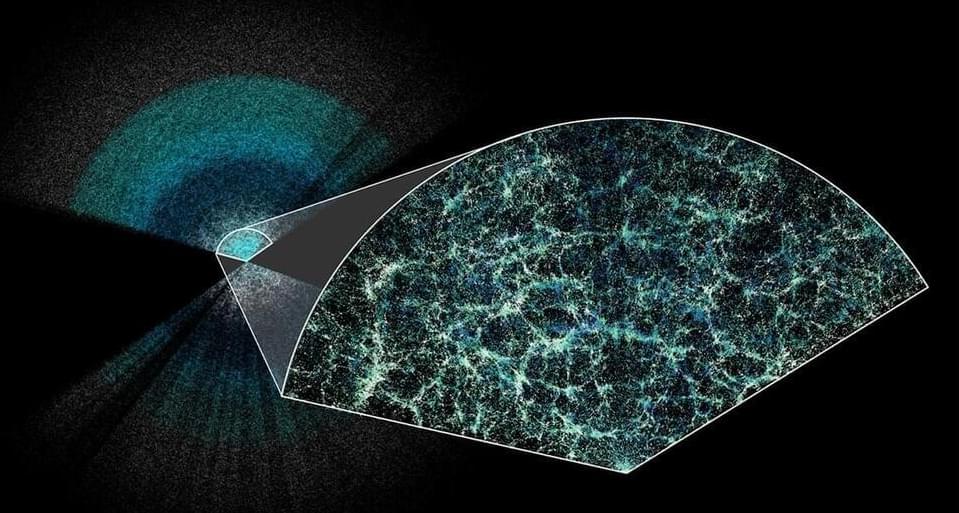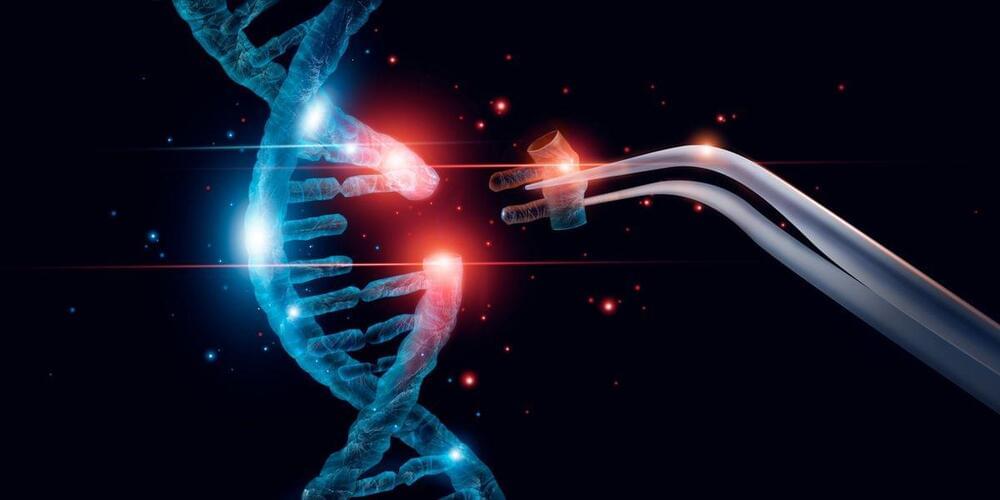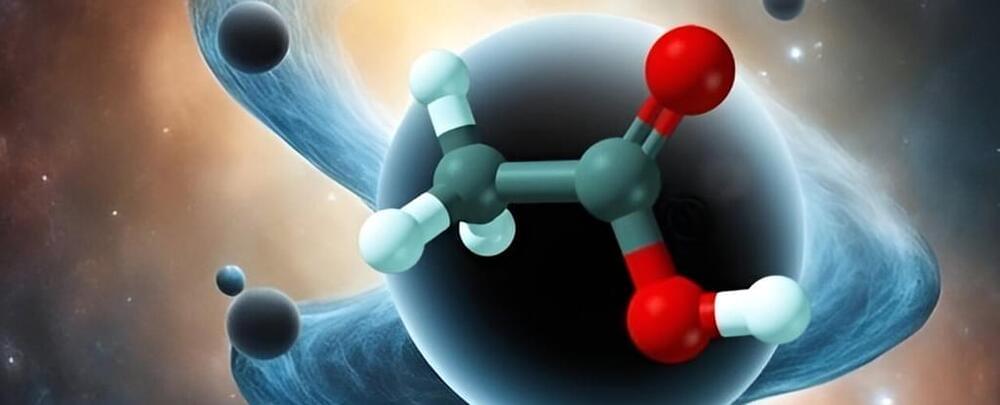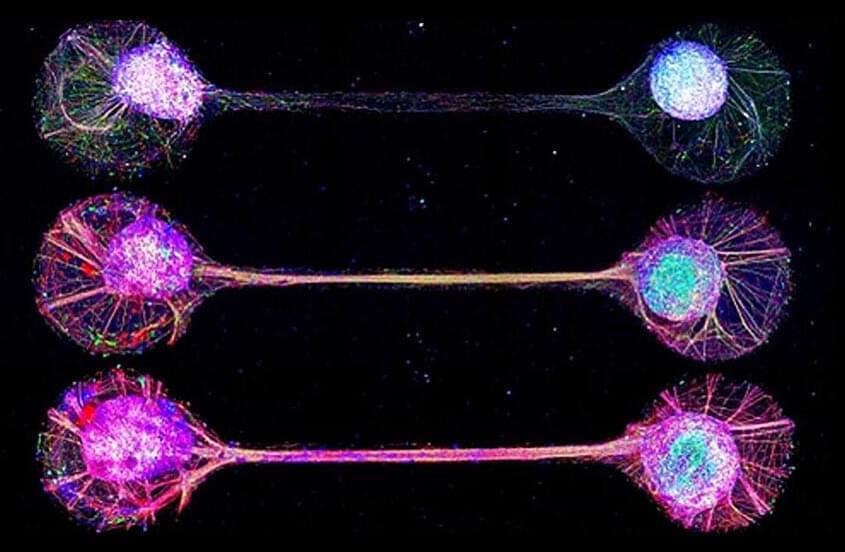A non-radical proximity labelling platform — BAP-seq — is presented that uses subcellular-localized BS2 esterase to convert unreactive enol-based probes into highly reactive acid chlorides in situ to label nearby RNAs. When paired with click-handle-mediated enrichment and sequencing, this chemistry enables high-resolution spatial mapping of RNAs across subcellular compartments.
Researchers reveal that naturally emerging epsilon-near-zero conditions in BaTiO3 can be exploited to drive permanent all-optical switching of ferroelectric polarization. The general nature of the epsilon-near-zero regime means that the approach could be used to switch spontaneous order parameters in other systems.
Could our First Alien Contact be with Intelligent Spiders as in the SciFi novel “Children of Time”? New blog posted on BigThink, link at https://www.searchforlifeintheuniverse.com/post/could-our-fi…nt-spiders
The Biden administration plans to announce awarding more than $6 billion to Samsung to expand its chip output in Texas, two sources said.
Dark matter is a ghostly substance that astronomers have failed to detect for decades, yet which we know has an enormous influence on normal matter in the universe, such as stars and galaxies. Through the massive gravitational pull it exerts on galaxies, it spins them up, gives them an extra push along their orbits, or even rips them apart.
Like a cosmic carnival mirror, it also bends the light from distant objects to create distorted or multiple images, a process which is called gravitational lensing.
And recent research suggests it may create even more drama than this, by producing stars that explode.
Researchers have successfully transformed CO2 into methanol by shining sunlight on single atoms of copper deposited on a light-activated material, a discovery that paves the way for creating new green fuels.
An international team of researchers from the University of Nottingham’s School of Chemistry, University of Birmingham, University of Queensland, and University of Ulm have designed a material made up of copper anchored on nanocrystalline carbon nitride.
The copper atoms are nested within the nanocrystalline structure, which allows electrons to move from carbon nitride to CO2, an essential step in the production of methanol from CO2 under the influence of solar irradiation. The research has been published in the Sustainable Energy & Fuels journal.
In a revolutionary scientific endeavor, researchers are using 5,000 miniature robots perched atop a mountaintop telescope to peer an astonishing 11 billion years into the past. This cutting-edge instrument, known as the Dark Energy Spectroscopic Instrument (DESI), is capturing light from distant objects in space, allowing scientists from the Lawrence Berkeley National Laboratory to map our cosmos as it was in its infancy and trace its evolution to the present day.
Why is this so important? Understanding how our universe has evolved is intrinsically linked to predicting its ultimate fate and unraveling one of the biggest mysteries in physics: dark energy. This enigmatic force is causing our universe to expand at an ever-increasing rate, and DESI is providing us with unprecedented insights into its effects over the past 11 billion years.
DESI has created the largest and most precise 3D map of our cosmos ever constructed, enabling scientists to measure the expansion history of the young universe with a precision better than 1 percent for the first time. This unparalleled view of the universe’s evolution is shedding light on the interplay between matter, dark matter, and dark energy in shaping the cosmos.
Nothing makes a mess of quantum physics quite like those space-warping, matter-gulping abominations known as black holes. If you want to turn Schrodinger’s eggs into an information omelet, just find an event horizon and let ‘em drop.
According to theoretical physicists and chemists from Rice University and the University of Illinois Urbana-Champaign in the US, basic chemistry is capable of scrambling quantum information almost as effectively.
The team used a mathematical tool developed more than half a century ago to bridge a gap between known semiclassical physics and quantum effects in superconductivity. They found the delicate quantum states of reacting particles become scrambled with surprising speed and efficiency that comes close to matching the might of a black hole.
The idea of growing functioning human brain-like tissues in a dish has always sounded far-fetched, even to researchers in the field. Towards the future goal, a Japanese and French research team has developed a technique for connecting lab-grown brain-mimicking tissue in a way that resembles circuits in our brain.
The work appears in Nature Communications.
It is challenging to study exact mechanisms of the brain development and functions. Animal studies are limited by differences between species in brain structure and function, and brain cells grown in the lab tend to lack the characteristic connections of cells in the human brain. What’s more, researchers are increasingly realizing that these interregional connections, and the circuits that they create, are important for many of the brain functions that define us as humans.
